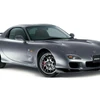The big stories to look out for in F1 2021

- Big drama expected at the front of the grid
- Midfield mayhem between five teams?
- New drivers, returning legends and the end of an era?
The 2021 Formula One season blasts into life in Bahrain this weekend (26-28 March), and as ever, a new year sparks fresh intrigue and potential for new storylines. We’ve picked out some of the top things to look out for, starting this weekend.
Hamilton v Verstappen for the title?
After a run of four seasons where Lewis Hamilton has barely been challenged for the full duration of an F1 season, all signs point towards a Hamilton v Max Verstappen battle royale for this year's title.
Verstappen’s Red Bull team look to have eradicated the gap to Hamilton’s Mercedes squad judging by winter testing form, or has even overtaken them. This opens up all sorts of intrigue as Verstappen has not fought for an F1 title so far, while Hamilton, a record-equalling seven time champion, has obvious experience of a title winning campaign.
Verstappen has been prone to the odd error here and there during his short F1 career so far, though these have been ironed out gradually, but it remains to be seen how he will handle the heat of a championship challenge. Despite the obvious talent, the young Dutchman has yet to be armed with a car capable of a full on season challenge and amazingly, the last championship he won was in karting in 2013!
The battle of the ‘number twos’
Hamilton’s teammate Valtteri Bottas is desperate to launch a title challenge of his own. The Finnish driver typically makes impressive starts to each season, and has won the first race of the year on the last two occasions. That has never translated into a serious title challenge though, despite having the best car on the grid for the past four seasons, and has served as Hamilton’s understudy in each of those seasons.
That is likely to be the case this time around too, while at Red Bull, Mexican veteran Sergio Perez has been brought in to replace Alexander Albon. Red Bull needed Albon to be within a few tenths of a second of Verstappen in order to execute better strategies for their lead driver and use Albon as a backup, but this was rarely able to materialise. Perez is seen as a much better prospect, and is expected to qualify closer to Verstappen and then give the team options in the race. Perez, finally armed with serious front-running car will be aiming for a championship challenge of his own, but his ultimate potential remains almost unknown despite his 191 F1 starts.
Ultimately the battle between Mercedes and Red Bull could all come down to who is the better number two driver.
Is this Hamilton’s final season?
The big talking point at the end of the 2020 season, and the winter, was the status of Lewis Hamilton. The champion only put pen to paper on a deal for the 2021 season in February, bizarrely late, and the deal is only for the coming season.
That will spark more rumours this year as to whether Hamilton will continue into F1’s new rules era due to start next year, or retire at the end of this season. The British driver is still only 36 and very much at his peak, and therefore has the potential for plenty more years in the sport, but whether he still has the hunger after breaking almost every F1 record on offer remains to be seen.
Will the new rules stop domination?
F1 finally enters an era of cost-capping, with teams limited to a spend of $145 million each year (excluding marketing costs, driver salaries and the wages of the top-three executives in each team). This obviously means that teams accustomed to spending their way out of trouble will need to be much more efficient going forward, while smaller outfits more used to spending that sort of cash will be more competitive. That’s certainly the aim anyway…
Also of note is the sliding scale for wind tunnel and computational fluid dynamics (CFD) testing. With on track testing now seriously regulated, wind tunnel and CFD usage has been the holy grail for finding aerodynamic gains. This is now more heavily restricted, with the top performing teams permitted lower levels of testing time compared to the teams which have performed less well over the preceding months. The aim is to again cut costs and level up the playing field.
Can McLaren finally win again?
The mighty McLaren team have won eight constructors’ championships, 12 drivers’ championships and a grand total of 182 race victories since they entered the sport in the late 1960s. But remarkably, the last race win came in 2012 and even podiums have been few and far between as the team fell down the order as the turbo-hybrid era started in 2014. After three years of serious struggle with Honda, the team switched to Renault power from 2018, with 2019 and 20 finally seeing the team challenge for podiums again.
But, keen to re-emerge as a championship contender, the British team have switched back to Mercedes power, the dominant engine package over the last seven years. McLaren and Mercedes have previous history; they paired up from 1995 to 2014, and were official partners for the majority of that time, winning three drivers’ crowns and the constructors’ in 1998. It’s hoped that a return to Mercedes will finally see McLaren return to winning ways, and new driver signing Daniel Ricciardo knows how to win races, and paired with talented Brit Lando Norris.
Who will emerge on top of the rookie rumble?
Three new drivers enter Formula One for the first time this weekend, each with varying levels of expectations. Alpha Tauri’s Yuki Tsunoda is perhaps the highest rated driver to join the grid, the Japanese talent has enjoyed a meteoric rise through the junior formulaes, climbing from F4 to F1 within three and a half years. He finished third in F2 last year, his first season in the category, and was bang on the pace in F1 testing a couple of weeks ago. New boy errors are expected, but so is performance.
The Haas team has a complete rookie line-up this year. They hand F1 debuts to Mick Schumacher and Nikita Mazepin, with Schumacher bearing the pressure of a rather famous surname. The 22-year-old German is the son of F1 legend Michael, viewed by many as the best driver of all-time. The younger version has shown he has plenty of talent too, having won the F3 and F2 titles in the past three seasons. He has a history of making a slow start to new categories though, but tends to shine in his second year, so expectations are muted for now, especially with a car that is likely to be at the back of the field.
Mazepin meanwhile enters the sport with a fair bit of controversy, a reputation earned both on and off the track. Out of the three, the least is probably expected from the Russian, but he’s still shown strong performance in the junior categories, and is worthy of a seat in F1, and brings big sponsorship money with him too.
Battle of the big movers
Some of F1’s biggest names outside the top-two have made team switches this year, and a fascinating battle is in store.
Daniel Ricciardo has swapped his Renault (now Alpine) seat for Carlos Sainz Jr’s berth at McLaren, with the Spanish driver taking Sebastian Vettel’s drive at Ferrari. Vettel moves to Aston Martin (formerly Racing Point) as a result, taking the seat of Perez, while Spanish double champion Fernando Alonso is now at Alpine after a couple of years away from F1 (see below).
This ‘merry-go-round’ of seats is commonplace, and each driver will be desperate to show that their move was the best choice.
Will Alonso still be at his peak despite two years away?
Walking away from F1 only to come back is always a calculated risk, as the cars usually change massively from season to season, while the lack of seat time tends to have an impact on a driver’s sharpness. But then not all drivers are Fernando Alonso, regarded as one of the most complete drivers in the world. The Spaniard hasn’t been laying idle in his absence, he’s won Le Mans, competed in the Indy 500 and the Dakar Rally, and has also completed plenty of mileage in an older F1 car after he confirmed his return.
He won’t be rusty and returns to the Renault-backed Alpine team for the third time in his career. This is the combination that won the championship in 2005 and 2006, and given the right car, Alonso will be a genuine title contender. Trouble is, the current Alpine car is an unlikely front-runner, and when times get tough, so does Alonso. Podiums perhaps, but wins are unlikely unless there are exceptional circumstances.
How will the order behind the top-two look?
The Mercedes v Red Bull battle at the front of the grid looks certain, but behind them, the five teams in F1’s midfield are as ever, covered by fractions. This was where F1’s battles were at their fiercest last year, and McLaren, Aston Martin, Alpha Tauri, Ferrari and Alpine will all be in the thick of it again.
Ferrari has the most to gain after one of the worst seasons in their history last year, but in reality each team has a genuine claim to be the ‘best of the rest’ this season. The quintet are likely to be so close in performance that they take it in turns at the head of this midfield pack. On a good day they could be fifth and sixth on the grid, and perhaps better than that, while on a bad day, they could be facing a rather gloomier 13th and 14th. Margins will be tight and the racing dramatic, so keep an eye on the midfield throughout the year.
Will the bottom three still be cut adrift?
Last year saw the Alfa Romeo, Haas and Williams teams operating in a class of their own at the back of the grid. Each was able to occasionally trouble the front-runners with Alfa Romeo the most likely to challenge for points, while for Haas and Williams it was rather harder.
Alfa and Haas were both hamstrung by a down on power Ferrari power unit, while Williams were recovering from a dreadful 2019 season. The Ferrari power issues are sorted, so that should provide a boost for two of the teams, while Williams will be hoping their Mercedes powered machine can be closer in pace again after edging closer last year, despite failing to score points.
Haas have made only minor upgrades to their car from last year, and this combined with an all new rookie line-up means they are expected to be at the back, with eyes instead on major progress in 2022.
Williams and Alfa meanwhile are aiming for consistent points this time around, and could end up mixing it with the established midfielders. Williams driver George Russell was able to put the car mid grid on occasions in qualifying last year, easily defeating teammate Nicolas Latifi, while Alfa has the benefit of former champion Kimi Raikkonen onboard alongside Antonio Giovinazzi.
As ever, the battle at the back is every bit as fierce as that at the front, with millions of dollars the difference between each place in the championship standings.
Richard Randle is a motorsport PR professional working with the UK’s top racing circuits and the UK’s premier single-seater category, the BRDC British F3 Championship.


